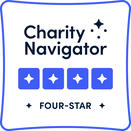|
How can visualization and mapping tools be used to make better decisions regarding HIV/AIDS testing services for key populations in remote, conflict areas? And in what ways might a systems-centric approach provide a better contextual understanding of issues in Myanmar? On April 26 to 27, 2018, the USAID HIV/AIDS Flagship (UHF) Project held a two-day “Systems Thinking & Data Visualization for HIV/AIDS” workshop to equip implementing partners with the tools necessary to visualize and contextualize the growing HIV/AIDS epidemic in Kachin State. In total, there were 15 participants from UHF implementing partner organizations: Asian Harm Reduction Network (AHRN), Médecins du Monde (MdM), Medical Action Myanmar (MAM), Metta Development Foundation (Metta), and Population Services International (PSI). The workshop was led by Envisage and organized by Community Partners International (CPI).
Robert Kelly, HIV/AIDS Key Populations Technical Advisor at USAID Burma, opened the workshop with a brief introduction to Systems Thinking. During his opening remarks, Mr. Kelly emphasized the need to gain a better contextual understanding of issues in Myanmar by looking at problems from a more comprehensive, systems-centric approach. In reference to the growing HIV/AIDS epidemic in Kachin State, Mr. Kelly pointed out different factors—political, economic, and social—currently in play within the wider system. Some of these include labor migration, mining opportunities, and the availability and flow of drugs. Following this brief introduction, Joel Hoefle, Founder of Envsiage, presented a more detailed exploration of Systems Thinking. He emphasized that UHF partners could utilize Systems Thinking to measure and visualize their services and objectives within wider social, economic, and health contexts, and gain a deeper understanding of the impact and the effectiveness of implementation approaches. The training included an overview of the 5 R’s—resources, roles, rules, relationships, and results—, a common framework to describe systems. The day concluded with an exercise on systems mapping, during which participants divided into groups and mapped the relationships between the 5 R’s. The purpose of the activity was to see how these different components—economic, social, or health—were interconnected with one another. One participant noted the value of utilizing a common framework to describe systems: “I immediately fell in love with the 5 R’s, which can be used for situational analysis of local systems. We are used to these kinds of analysis but this feels more systematic and presentable in my opinion.” Building on lessons from the first day, participants explored the wider connections within systems and organizations—this time, through a visualization application. Participants learned how to create concept maps using Visual Understanding Environment (VUE), a concept and content mapping application. Participants also explored VUE’s data-driven feature, with which they can map large quantities of data. In addition to VUE, participants were briefly introduced to other available visualization tools such as Tableau, Power BI, and QGIS. For the final session of the two-day workshop, participants learned about basic Geographic Information Systems (GIS) mapping tools. In Kachin State, many people who inject drugs (PWIDs) live in remote, hard-to-reach villages with limited access to HIV/AIDS testing and treatment services. It is often challenging for partners to accurately estimate the time that it takes for key populations, including PWIDs, to reach harm reduction or drop-in centers that they operate. To help improve the accuracy of their estimated journey times for clients, participants learned how to manually map the exact coordinates of villages on Google Maps and export data into Google Earth so that it can be used offline in the field where there is no internet connection. Following this exercise, participants explored techniques to overlay additional map layers from other sources such as Google Maps onto Google Earth to provide a more detailed visualization framework. To conclude, participants learned how to export data such as regions with high incidences of HIV/AIDS, malaria, or tuberculosis onto Google Earth. They discussed the potential application of this technique for their purposes, such as mapping data on armed conflict within their project areas to assess the impact on current and planned mobile outreach services. A participant neatly described the value of the mapping portion of the workshop in their feedback: “With the tools that we learned, we can better estimate the time that it takes for key populations to reach service centers in Kachin State. Having a good understanding of how people are receiving health care is important for setting up new strategies within the area. We can also have more reliable data on migration of key populations within the region, which might give us a better understanding of how HIV/AIDS is being transmitted from one area to another.” The UHF Project will continue to provide ICT support to partners and train them in other mapping and visualization tools to help partners better understand the HIV/AIDS epidemic in Myanmar. Comments are closed.
|
AuthorCPI Admin Archives
July 2024
Categories
All
|
|
|
COMMUNITY PARTNERS INTERNATIONAL
580 California St Fl 16, Ste 1658, San Francisco, CA 94104-1068, USA [email protected] +1 510 225 9676 We are a registered nonprofit 501(c)(3) Public Charity. TAX ID 94-3375666 |
©
Community Partners International

 RSS Feed
RSS Feed
